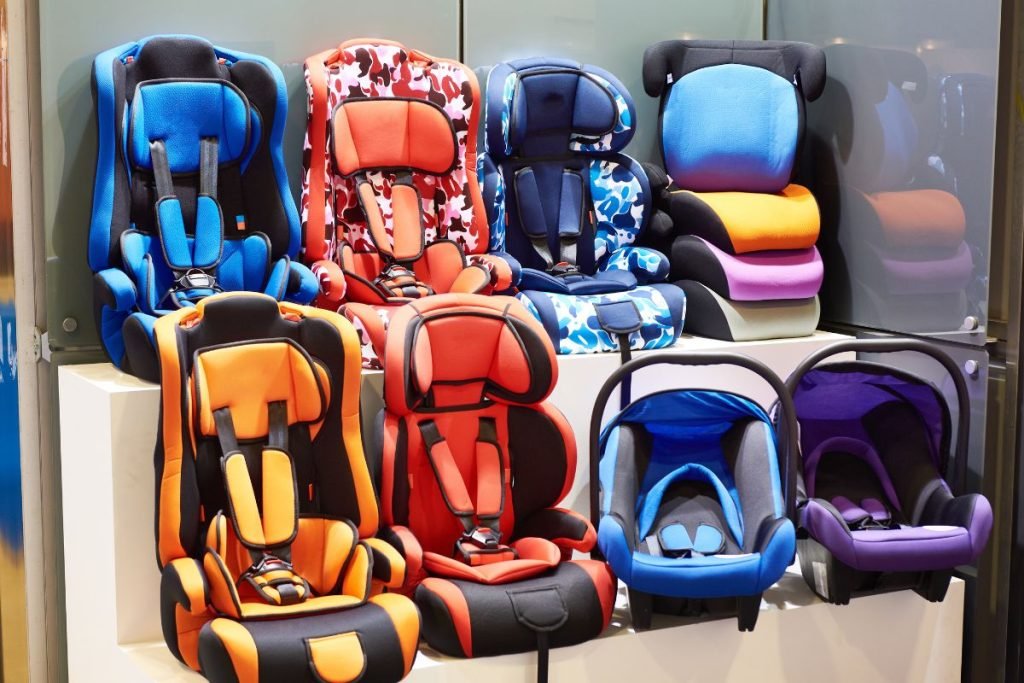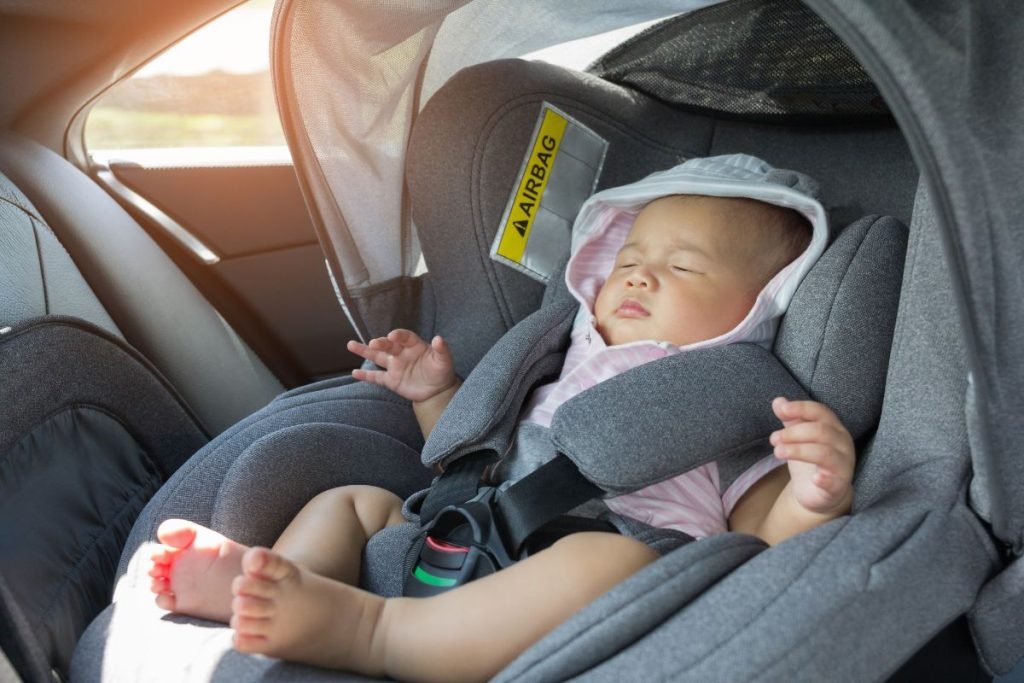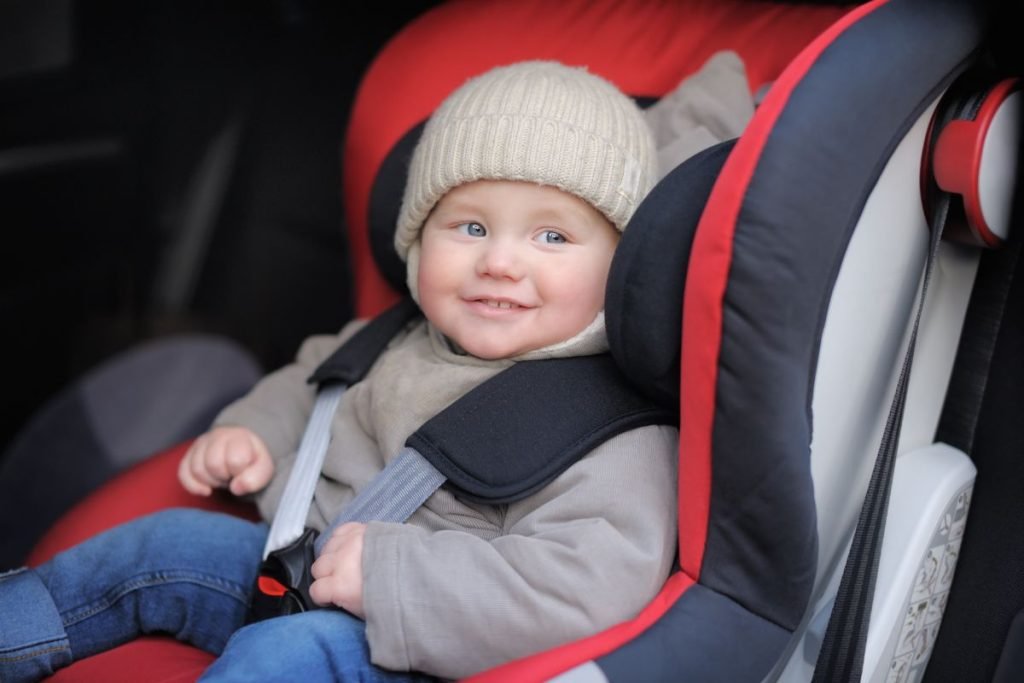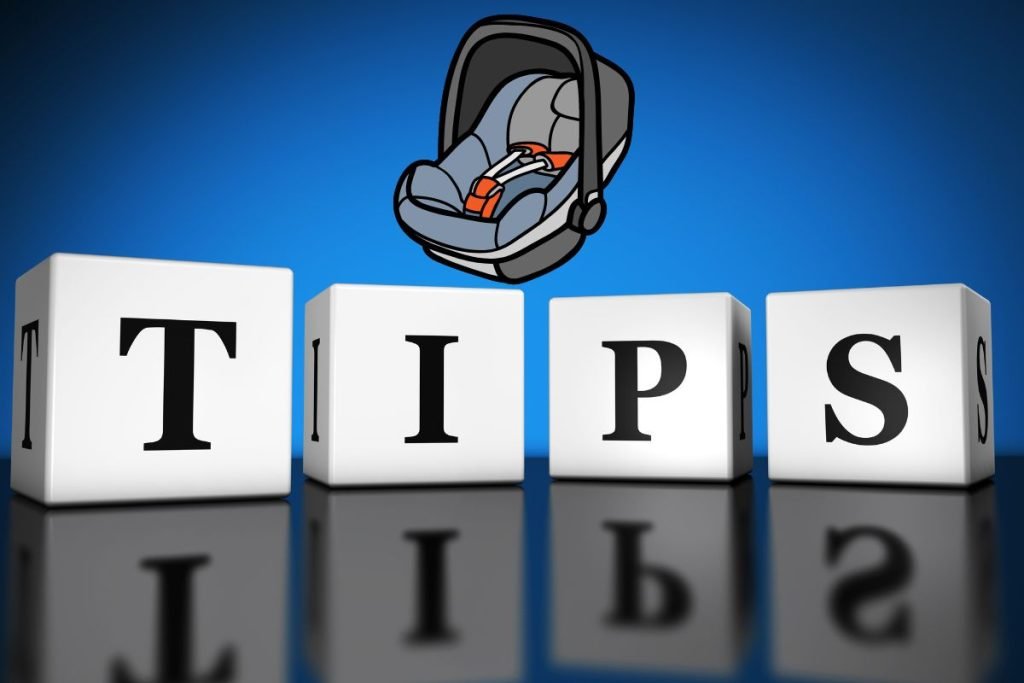How to Pick the Perfect Travel Car Seat: From Newborns to Toddlers in 2025

Are you searching for the perfect travel car seat for your family vacation or traveling with your little one?
Choosing the right car seat ensures your child’s safety and comfort on the road. This blog post will guide you through selecting the ideal travel car seat for every age, from newborns to toddlers.
You’ll learn about the different types and key features based on age/size and how to choose the Best Travel Car Seats for easy installation, portability, and travel-friendliness. By the end, you’ll know how to make an informed decision for stress-free, safe family travels.
Key Takeaway – How to Pick the Perfect Travel Car Seat for Every Age
- For infants, choose a lightweight rear-facing seat with a 5-point harness, side impact protection, and an insert for newborns. Keep rear-facing until at least 1 year.
- For toddlers, transition to a convertible seat when they exceed height/weight limits. Keep rear-facing until at least 2 years old if possible.
- For travel-friendly seats, look for lightweight, compact, FAA-approved models with easy installation features.
- Prioritize safety first. Pick seats with rigorous side impact protection and proper installation. Consider budget and value for money as well.
Car Seats for Newborns (Birth to 1 year)

Use a Rear-Facing Infant Car Seat
The most important aspect of infant seat safety is placing the seat in the rear-facing position. The American Academy of Pediatrics and other child safety organizations have conducted extensive research recommending keeping children in this position until at least 2.
This is because it better supports their vulnerable head, neck, and spine in case of an accident, which significantly reduces the risk of severe injuries.
5-Point Harness & Side Impact Protection Required
To ensure your baby’s safety, securing them snugly while traveling in a car or airplane is important. Look for seats that come with a five-point harness system.
These harnesses have two shoulder straps, two leg straps, and a center strap that all buckle together. This ensures that crash forces are distributed evenly across the body’s strongest parts.
Many high-quality infant seats also have side-impact protection padding or energy-absorbing foam that can protect your little one’s head from dangerous side collisions.
Infant Insert Recommended for Newborns <22 lbs
Most infant car seats are designed to accommodate infants between 4 to 22 pounds. However, ensuring that a newborn fits snugly into the seat is essential, as they are too small to fit securely without additional support.
To address this issue, manufacturers often include removable inserts that offer extra support for newborns. These inserts help position the baby correctly and prevent slouching, which can be dangerous. Parents can use the insert to ensure their baby stays comfortable and safe during car rides.
Keep Rear-Facing Until at Least 1 Year and 20 lbs.
It is highly advisable to prioritize your baby’s safety by allowing them to remain in their rear-facing infant seat until they weigh at least 20 pounds and reach 1 year of age. This is because their spine is still developing and is better protected when facing the car’s rear. As tempting as it may be to switch to forward-facing earlier, it’s important to prioritize safety over convenience.
Lightweight, Compact Size
Choosing a lightweight infant seat under 20 pounds is best when traveling with kids. This will make managing your luggage easier, navigating through airports, taking taxis, or fitting into smaller rental vehicles. The Car Seat Laws for Traveling ensure all infants travel safely regardless of the mode of transport.
Installation Considerations
When installing a car seat, it’s important to ensure the base is securely attached using either the LATCH system or the vehicle seat belt. To avoid any hassle on your journey, it’s recommended that you practice the installation a few times at home before any big trips. And always keep the instruction manual with you in your carry-on, just in case you need it.
Car Seats for Toddlers (1-3 years)

Transition to Convertible Seat Upon Exceeding Infant Seat Limits
As your little one reaches the age of 12-15 months, they’ll start to outgrow their infant car seat, making it necessary to switch to a larger and more versatile convertible car seat.
These seats offer a range of features designed to accommodate growing toddlers, including adjustable headrests and harnesses and high weight and height limits.
They’re also equipped with advanced safety features, such as energy-absorbing foam and reinforced steel frames, to keep your child secure and protected in an accident.
With a convertible car seat, you can rest assured that your child is comfortable and safe as they grow and develop.
Convertible Seats: Rear-Facing to Forward-Facing
One of the best features of a convertible car seat is that it can be installed in the rear-facing position for infants and young children, as per the instructions provided by experts.
As your child grows and reaches the higher rear-facing weight and height limits (usually around 40 pounds), you can easily switch the seat to the forward-facing position without purchasing a new car seat.
Keep Rear-Facing Until at Least 2 Years Old if Possible
Although many parents may feel compelled to turn their toddler’s car seat around to face forward, safety organizations strongly advise against doing so until the child is at least 2 years old.
This is because the bones and muscles in young children are still developing, and the rear-facing position offers important protection for the head and spine.
Forward-Facing: 5-Point Harness with Higher Weight/Height Limit
As your child grows, it’s essential to ensure their car seat is safe and appropriate for their size and weight. When your little one reaches the rear-facing weight limits of the car seat, generally around 40 pounds or more, it’s time to turn the convertible seat forward-facing.
Premium convertible car seat models feature an adjustable 5-point harness system designed to accommodate larger children, with some models extending to the weight limit of 65 pounds or more.
This feature ensures that your child is comfortably and safely fastened into the car seat while traveling, providing you with peace of mind.
Tips for Choosing the Best Travel Car Seat

Safety Considerations
When selecting a travel car seat, it’s crucial to prioritize safety. This means finding a model that meets and exceeds the latest safety standards. Look for seats that provide rigorous side-impact protection and proper installation guidelines. Remember that even high-quality seats can be unsafe if not installed correctly.
Additionally, pay attention to the seat’s expiration date. Over time, materials can degrade and become less effective at providing the necessary level of protection. Therefore, choosing a seat with a future expiration date is important so you can rest assured that your child is always safe while traveling.
Comfort Features
Providing a comfortable and safe environment for children during journeys is paramount. To achieve this, car seats are designed with features that cater to the unique needs of growing children.
Breathable fabric ensures the child stays cool and comfortable, especially during long journeys. Adjustable headrests and harness heights allow for a personalized fit as the child grows, ensuring their safety and comfort. In addition to these features, car seats have convenient storage options such as cup holders and pockets.
These cozy touches provide a sense of familiarity and ease, making the child feel comfortable and at home while on the road. Overall, a well-designed car seat with these features can ensure a safer, more comfortable, and enjoyable journey for the child and their parents.
Ease of Use
Finding the right car seat is essential for those who frequently travel with young children. Look for car seats that feature push-button LATCH connectors or built-in lock-offs for the vehicle seat belt, allowing for easy and secure installation.
One-handed adjustments to the harness should also be a priority, as they make it easy to tighten or loosen the straps as needed quickly. Additionally, look for color-coded guides that make it simple to set up the seat properly every time, ensuring maximum safety for your child.
Portability and Travel-Friendliness
If you plan to travel by air, opting for an FAA-approved lightweight model weighing less than 20 lbs is highly recommended. These models are specifically designed for air travel, and they can make your journey much more comfortable and hassle-free.
Some models even come with compact folding options that allow them to fit into the overhead compartment, saving you the trouble of checking them in. If gate-checking is permitted, you may choose a seat with a carrying strap or backpack-style case.
This will enable you to navigate airports hands-free while carrying your luggage, making it much easier to move around and board your flight. With a lightweight, compact, and easy-to-carry model, you can enjoy your air travel experience without worrying about heavy and bulky luggage.
Budget Considerations and Value for Money
When selecting a travel car seat, it’s essential to prioritize safety, even if it means spending a little more money. With a vast array of models available, it’s important to consider the long-term value of your purchase.
For instance, convertible car seats that can adapt to multiple stages of your child’s growth or seats with extra bases that can be used in multiple cars can be a wise investment.
When shopping, identify your must-have features, such as easy-to-install designs or adjustable harnesses, and stay within your budget. Considering these factors, you can select a travel car seat that will provide both safety and comfort for your child.
Forward-Facing Limits (65+ lbs)
Convertible car seats are a popular choice for parents as they can be used in both rear-facing and forward-facing positions. However, as children grow, they usually outgrow their car seats, which means parents must purchase a new one.
To avoid this, some convertible car seats have a higher weight capacity, allowing them to accommodate forward-facing children up to 65-85 lbs, depending on the model.
This means that parents can delay the need for a belt-positioning booster, which is more convenient and cost-effective.
Higher Rear-Facing Limits (40+ lbs)
Convertible car seats are designed to have high rear-facing weight limits, usually ranging from 40 to 50 pounds. This means that children can remain in a rear-facing position for longer, which is considered their safest position.
Keeping children rear-facing for as long as possible ensures that their head, neck, and spine are fully protected in a collision. Therefore, taking advantage of the generous rear-facing limits offered by convertible car seats is highly recommended.
Side Impact Protection
As a parent, your top priority is keeping your child safe, especially during their active toddler years. While the convertible car seat’s longevity is an added benefit, properly installing a quality convertible seat is crucial. Properly installing a convertible seat ensures your little one is optimally restrained during all journeys.
Summary
The safety of children during trips is important. First, start with a rear-facing infant seat and switch to a convertible model as they grow. Look for top safety ratings, easy installation, and maximum rear-facing time to choose the right car seat.
Lightweight and FAA-approved seats can make traveling easier. Convertible options are a good choice as they provide value through multiple stages.
Follow these tips to select the ideal car seat for every age and journey, giving you peace of mind to enjoy the ride with your little ones.
Frequently Asked Questions
What Are the Top Features to Look for in a Travel Car Seat?
Top features include lightweight portability, compact size, FAA approval, easy installation with LATCH/seatbelts, adjustable multi-position, side-impact protection, and extended rear-facing.
What Is the Best Infant Car Seat for Travel?
Great infant travel seats are the Chicco KeyFit 30, Peg Perego Primo Viaggio 4-35, and Safety 1st onBoard 35 Air+ – lightweight, easy to install, and airplane-approved.
How Do I Install a Car Seat Properly for Travel?
Refer to manuals. For the seatbelt, route the belt through the designated path and remove slack. For LATCH, attach lower anchors and tighten the strap – less than 1″ of movement at the belt path.
What Is the Safest Car Seat for Newborns?
Rear-facing only with a 5-point harness, side-impact protection, and infant insert. Top picks: Chicco KeyFit 30, Cybex Aton 2, Nuna Pipa. Use rear-facing until at least age 2.
What Features Make a Car Seat Travel-Friendly?
Lightweight under 20lbs, FAA airplane approved, quick-remove bases, carrying cases, compact/foldable, cup holders, machine-washable covers.





